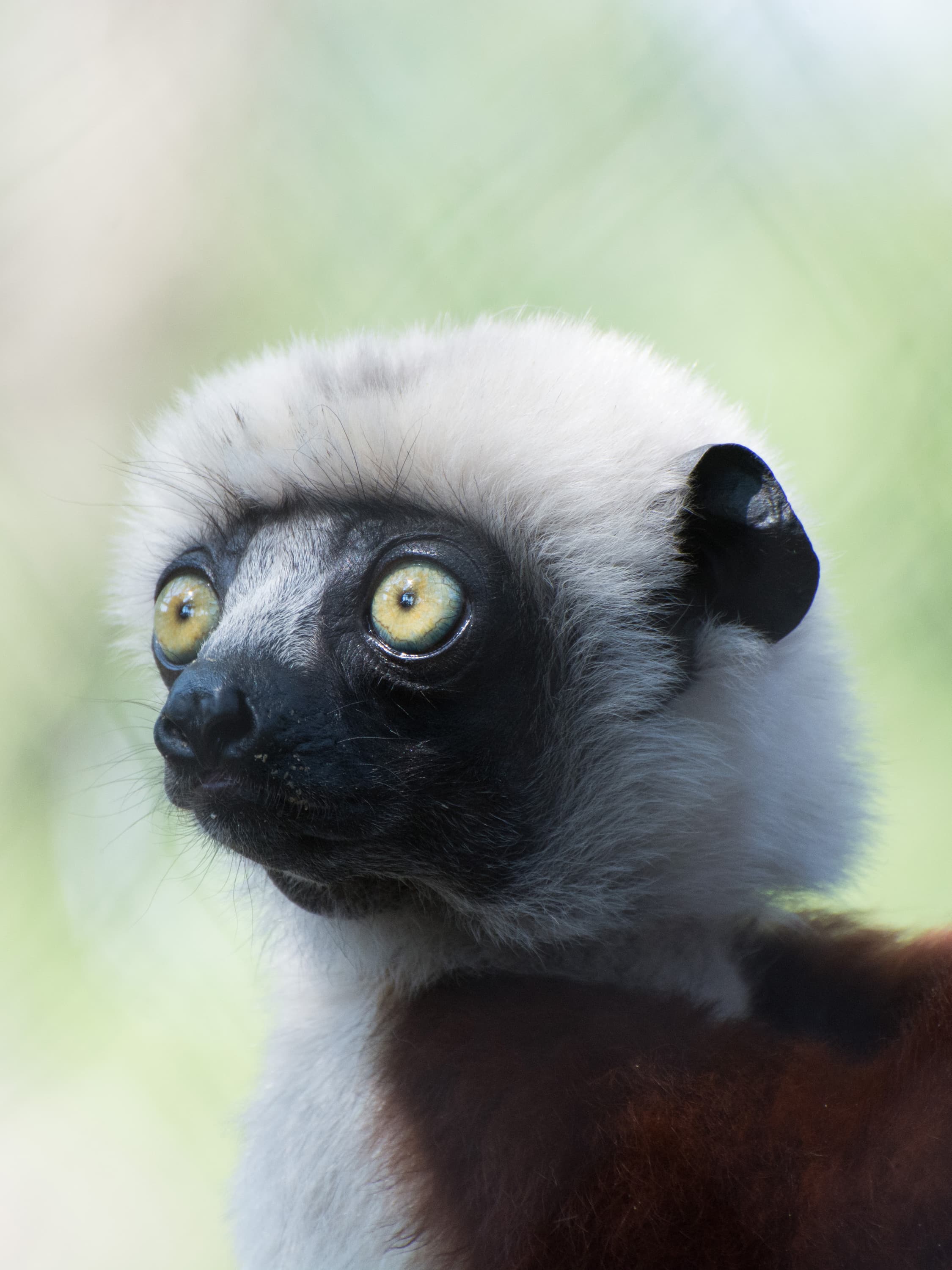
Coquerel's Sifaka
Propithecus coquereli
Did you know?
- The Coquerel’s sifaka was named after the alarm cry it makes when it sees an enemy (shif-auk).
- Sifakas are some of the largest living lemurs. An adult Coquerel's sifaka is about 20 inches from head to rump, plus another 16 to 24 inches for the tail.
- They are vertical clingers and leapers. They bounce and jump along the ground on their back legs, a locomotion style unique in the mammal world
- Sifakas eat mostly plants – leaves are their favorite food.
- Infant sifaka cling to their mothers' bellies for the first three weeks of life. After that they ride on their mothers' backs.
Leaping
A sifaka’s long, frog-like legs enable it to leap up to 30 feet between tree trunks! Their hopping on the ground is a unique movement which is often a sideways locomotion that involves galloping, skipping and hopping!
Young and Family
Coquerel's sifakas are social animals that live in families. After a gestation of about five months, a female will give birth to one baby. Infant sifaka cling to their mothers’ bellies for the first three weeks of life. After this stage, they ride on their mothers’ backs.
Threat Level
- Unknown
- Common
- Near Threatened
- Threatened
- Endangered
- Critically Endangered
- Extinct in the Wild
Critically Endangered
The Coquerel's Sifaka faces an extremely high risk of extinction in the wild.
Range
Madagascar
Habitat
Forests

We care about Coquerel’s sifakas
Like many types of sifaka, the Coquerel's sifaka is in danger of extinction in the wild. These animals suffer from continued habitat loss, as their forest homes are logged for timber and turned into farmland. We are helping these animals through the Saint Louis Zoo WildCare Institute Center for Conservation in Madagascar. Additionally, rhe Saint Louis Zoo participates in the Species Survival Plan for this species, a cooperative breeding program that helps ensure a healthy population of animals. Learn more about how we are helping sifakas in the wild.
Find this animal in Historic Hill

SAINT LOUIS ZOO ZONE
Historic Hill
Historic Hill is a lovely stroll through one of the oldest parts of the Saint Louis Zoo. From the 1904 World’s Fair Flight Cage to the Spanish architectural flavor of the 1920s in the Bird House, Primate House and Herpetarium to the finishing touches of our thoroughly modern exhibits, this area of the Zoo has a unique ambiance and a nostalgic history that make it a great destination.

